1. Drain the liquid from the cooling system (see «Coolant replacement»).
2, Remove the radiator fan (see «Removal and installation of the electric fan of the radiator of the engine cooling system»).
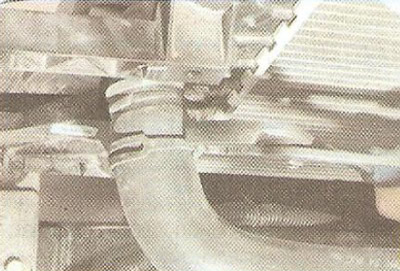
3. Loosen the radiator outlet hose clamp by squeezing its bent ears with pliers, slide the clamp along the hose and remove the hose from the radiator pipe.
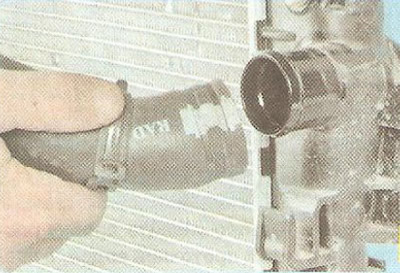
4. Disconnect the radiator inlet hose in the same way.
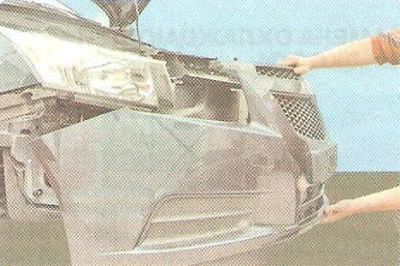
5. Remove the front bumper (see «Removal and installation of bumpers»).
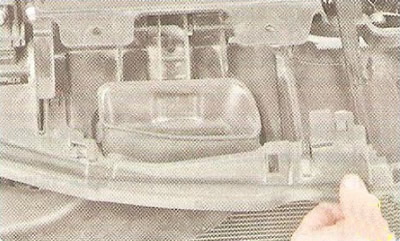
6. Pry off the edges of the air intake holder...
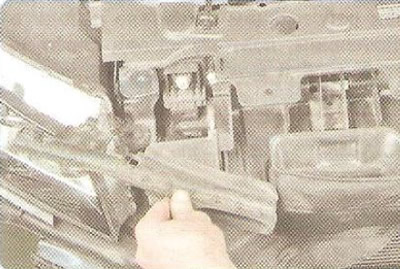
7.... and remove the holder, overcoming the resistance of the clamps.
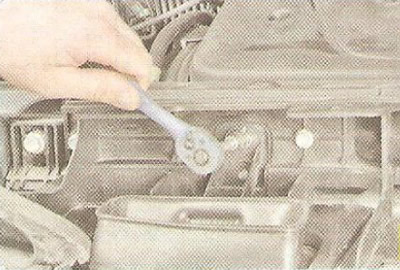
8. Turn out a bolt of fastening of an air inlet to the top crossbar of a frame of a radiator.
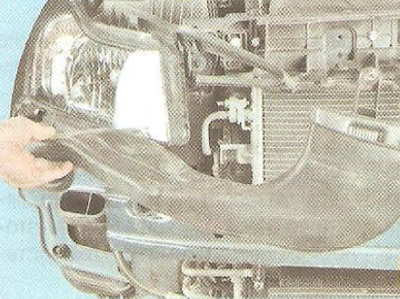
9. Remove the air intake.
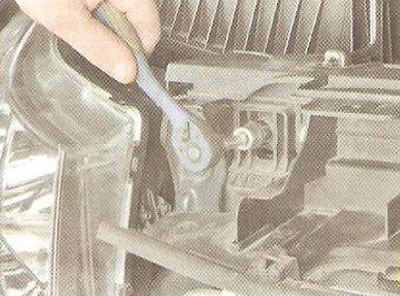
10. Turn out a bolt of fastening of the right arm of the top support of a radiator to the top crossbar of a frame of a radiator.
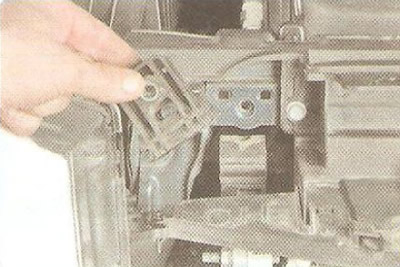
11. Remove the top bracket.
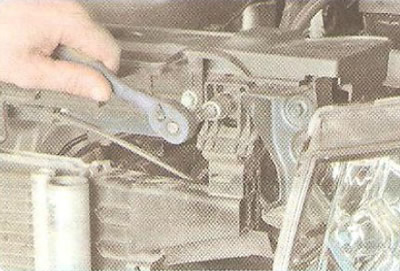
12. Turn out a bolt of fastening of the right arm...
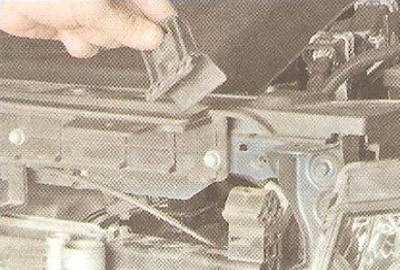
13.... and remove the upper support bracket.
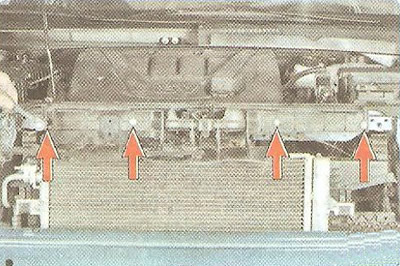
14. Turn out four bolts of fastening of an arm of a forward bumper to the top crossbar of a framework of a radiator.
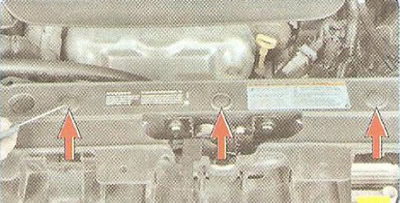
15. Using a screwdriver, lift the latches of the three caps securing the front bumper bracket to the upper cross member of the radiator frame...
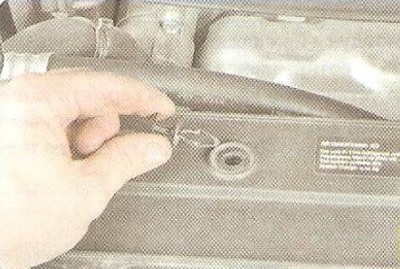
16.... and remove the caps.
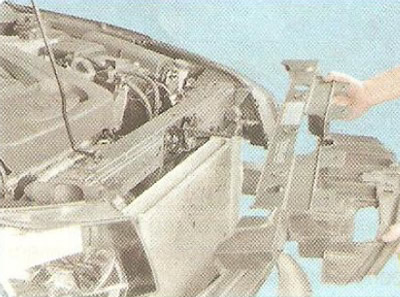
17. Remove the bracket.
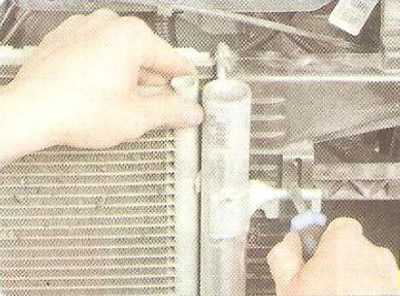
18. Having pressed the latches...
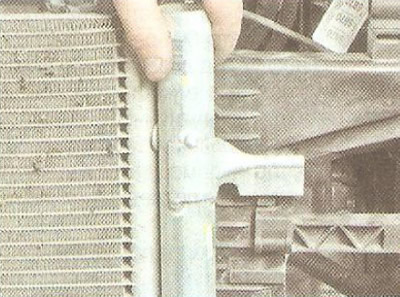
19.... pull out the condenser brackets on the left and right (air conditioner radiator) from the holders on the tanks of the radiator of the cooling system.
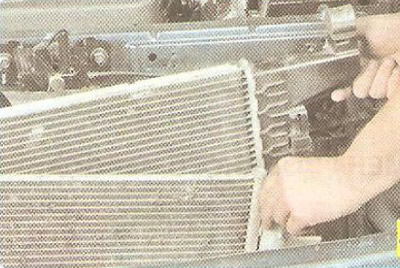
20. Raising the radiator, remove the pins of the lower radiator supports from the rubber pads and remove the radiator.
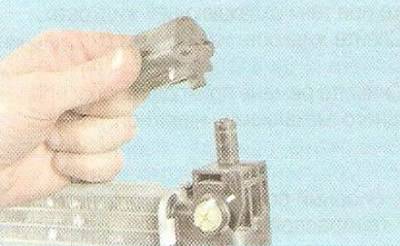
21. Remove cushion from top support pin.
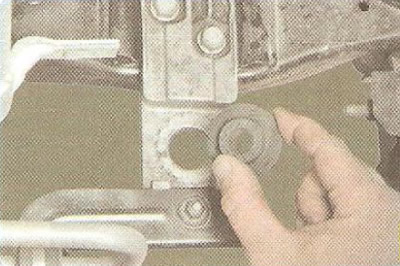
22. Remove the cushion from the bottom support pin or remove it from the hole in the bottom bracket of the radiator frame. Replace heavily compressed or hardened pads.
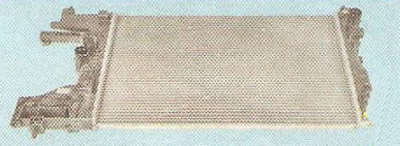
23. Rinse the outside of the radiator with a jet of water and dry. If cracks are found on the plastic tanks of the radiator, replace the radiator.
24. Check the tightness of the radiator, for which plug the radiator pipes, supply air to it at a pressure of 0.1 MPa (1 kgf/cm2) and immerse in a container of water for at least 30 seconds. Leakage of the radiator is determined by the outgoing air bubbles. If the radiator does not fit into the container as a whole, check it sequentially from all sides.
25. Establish a radiator in sequence, return to removal.
In order to further eliminate the possibility of leakage of coolant, before installing the hoses, lubricate the radiator pipes with a thin layer of silicone sealant.
26. Fill in coolant and remove air plugs from the cooling system.
